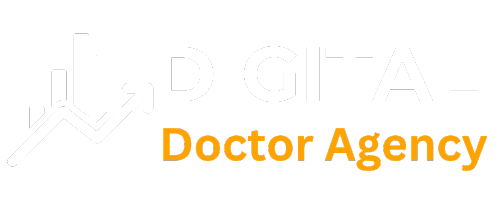Introduction
It’s Monday morning. Instead of rushing through traffic to sit in a cubicle for eight hours, you’re sipping coffee in your home office—or maybe at a beachside café in Bali. You check your emails to find three new project offers from clients around the world. You choose which ones to accept, set your own deadlines, and get to work on your terms. No boss micromanaging you. No rigid 9to5 schedule. Just you, your skills, and the freedom to build the career you’ve always wanted.
This isn’t a fantasy—it’s the reality of freelancing. do you want to know how to start freelancing.
In today’s digital age, freelancing has exploded as a viable career path. According to Upwork, 59 million Americans freelanced in 2023, contributing over $1.4 trillion to the economy. The global freelance market is growing rapidly, with platforms like Fiverr, Upwork, and Freelancer.com making it easier than ever to connect with clients worldwide.
But here’s the truth: Freelancing isn’t just “working from home.” It’s running your own business. It requires strategy, discipline, and persistence. Many people jump in without preparation and struggle to find clients, set the right prices, or maintain steady income.
That’s where this guide comes in.
Whether you’re a complete beginner, a student looking for side income, or a professional wanting to escape the 9to5 grind, this guide will walk you through exactly how to start freelancing, choose the right niche, find highpaying clients, and build a sustainable career.
By the end, you’ll have a stepbystep roadmap to launch your freelancing journey the right way.
What is Freelancing?
Freelancing means offering your skills and services to clients on a projectbyproject basis, rather than working as a fulltime employee. Instead of having a single employer, you work with multiple clients, often remotely, and manage your own business.
Who Can Freelance?
Almost any skill can be freelanced, but some of the most profitable and indemand freelance jobs include:
Writing & Editing (Blog posts, eBooks, copywriting, proofreading)
Graphic Design (Logos, social media graphics, branding)
Web & App Development (Frontend, backend, fullstack)
Digital Marketing (SEO, social media management, PPC ads)
Video Editing & Animation (YouTube videos, commercials, explainer videos)
Consulting (Business, finance, career coaching)
Virtual Assistance (Admin support, email management, customer service)
The Pros and Cons of Freelancing
Before diving in, it’s important to weigh the benefits and challenges:
✅ The Pros: Why Freelancing is Amazing
1. Freedom & Flexibility – Work from anywhere, set your own hours.
2. Unlimited Earning Potential – No salary cap; charge what you’re worth.
3. Diverse Projects – Work with clients across industries.
4. No Office Politics – You’re your own boss.
5. Skill Growth – Constantly learn new tools and industries.
❌ The Cons: The Real Challenges
1. Irregular Income – Some months are booming; others are slow.
2. SelfDiscipline Required – No boss means you must stay motivated.
3. No Employee Benefits – No health insurance, paid leave, or retirement plans.
4. Client Hunting – Finding good clients takes effort.
5. Competition – Many freelancers compete for the same gigs.
Freelancing isn’t for everyone. If you thrive on stability and structured environments, a traditional job might suit you better. But if you value freedom, growth, and control over your career, freelancing can be lifechanging. Than, this is the best guide for how to start freelancing journey in 2025 with no experience
Step-by-Step Roadmap on How to start freelancing with no experience!
Step 1: Choose Your Freelance Niche
One of the biggest mistakes beginners make is offering too many services. You might think, “I’ll attract more clients if I offer writing, design, and social media!” But in reality, specialists earn more and get hired faster.
How to Pick the Right Niche:
1. Assess Your Skills & Interests
What are you good at?
What do you enjoy doing?
Have you received compliments on a particular skill?
2. Research Market Demand
Check job boards (Upwork, Fiverr, LinkedIn).
Which services have the most job postings?
What are clients willing to pay for?
3. Test Before Committing
Try small gigs in different areas.
See what feels most natural and profitable.
Example:
If you love writing but notice that SEO blog posts are in high demand, specialize in that instead of general content writing.
Step 2: Build Your Skills
If you don’t have experience, don’t panic. Many successful freelancers started with zero professional background. Here’s how to skill up fast:
Take Free/Paid Courses (Coursera, Udemy, YouTube)
Practice Daily (Start a blog, design mock projects)
Get Feedback (Post work on Reddit, Facebook groups)
Pro Tip: Create a portfolio even if you have no clients. For writers, publish samples on Medium. For designers, create mock logos on Canva.
Step 3: Choose the Right Freelance Platform
Different platforms cater to different freelancers. Here’s a breakdown:
| Platform | Best For | Fee Structure | Competition Level |
|||||
| Upwork | Longterm projects, highpaying clients | 10%20% (sliding scale) | High |
| Fiverr | Quick gigs ($5$500) | 20% per sale | Very High |
| Freelancer | Budget projects, bidding system | 10%20% | Extremely High |
| Toptal | Elite freelancers (top 3%) | Varies | Low (but strict screening) |
| PeoplePerHour | UK/EU clients | 20% (first £350) | Medium |
Beginners should start with Fiverr or Upwork.
Step 4: Create an Irresistible Freelance Profile
Your profile is your first impression. A weak profile = no clients. Here’s how to make it stand out:
Profile Checklist:
✔ Professional Photo (No selfies—use a clean headshot)
✔ Clear, BenefitDriven Bio (Not “I write blogs” but “I help SaaS startups rank 1 with SEOoptimized content”)
✔ Portfolio Samples (Even if unpaid, show your best work)
✔ Competitive Pricing (Start low, increase as you gain reviews)
Bad Bio Example:
“I am a freelance writer. Hire me for blogs.”
Good Bio Example:
“I help ecommerce brands increase sales with highconverting product descriptions. Featured in Forbes & Shopify. Let’s grow your business!”
Step 5: Land Your First Clients
This is where most people get stuck. Here’s how to get started:
Strategy 1: Freelance Platforms (Upwork, Fiverr)
Bid Smartly on Upwork – Personalize each proposal.
Optimize Fiverr Gigs – Use keywords, eyecatching images.
Offer Discounts for Reviews – First clients get 50% off in exchange for testimonials.
Strategy 2: Cold Pitching
Find businesses that need your service.
Send a short, persuasive email:
> “Hi [Name], I noticed your website could use engaging blog posts to attract more customers. I specialize in [your niche] and would love to help. Here’s a sample: [link]. Let’s discuss!”
Strategy 3: Leverage Social Media
LinkedIn – Post about your services, connect with potential clients.
Twitter/Instagram – Share your work, use hashtags (FreelanceWriter HireMe).
Facebook Groups – Join nicherelated groups, offer value before selling.
Section 3: Setting Your Freelance Rates (How Much Should You Charge?)
One of the biggest struggles for beginners is pricing. Charge too little, and you’ll burn out. Charge too much, and clients may hesitate.
Freelance Pricing Models:
1. Hourly Rate (Best for uncertain projects)
Beginners: $10$30/hr
Experts: $50$200+/hr
2. Fixed Price (Best for defined tasks)
Example: “Blog post: $150”
3. Retainer Model (Monthly recurring income)
Example: “4 blog posts/month for $800”
Factors That Affect Your Rate:
Experience Level (More skills = higher pay)
Industry Standards (Tech pays more than writing)
Client’s Budget (Startups vs. Fortune 500 companies)
Geographic Location (US clients pay more than local ones)
Golden Rule: Never work for free (except for a portfolio piece).
Section 4: Managing Your Freelance Business Like a Pro
Freelancing isn’t just about doing the work—it’s about running a business.
Essential Freelance Tools:
Trello/Asana – Project management
Wave/QuickBooks – Invoicing & accounting
PayPal/Wise – Payments
Grammarly/Hemingway – Editing (for writers)
How to Handle Difficult Clients:
Set clear contracts (use HelloSign or DocuSign).
Get 50% upfront for big projects.
Don’t tolerate abuse—fire bad clients politely.
Section 5: Scaling Your Freelance Career
Once you’re consistently booked, it’s time to scale up:
Raise Your Rates (Increase by 20% every 6 months).
Offer Premium Services (e.g., “Content Strategy” instead of just “Blog Writing”).
Outsource Work (Hire subcontractors to handle overflow).
Build a Personal Brand (Start a blog, YouTube, or podcast).
Conclusion
So, how can a beginner start freelancing?
By following the steps in this guide:
- Learn a skill
- Build a basic portfolio
- Join freelancing platforms
- Deliver excellent work
- Keep learning and scaling
Whether you’re asking how to start a freelance job, how to start freelancing online, or how to start freelancing with no experience, remember: every top freelancer started with zero experience.
Start today. Take messy action. Your future freelance career is waiting.
Follow Us on :

